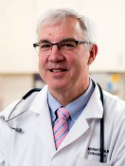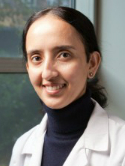| Abstract: |
The objective of this study was to determine whether post-therapy 131I SPECT/CT changed the need for additional cross-sectional imaging or modified the American Thyroid Association risk of recurrence classification. We performed planar imaging and SPECT/CT in a consecutive series of patients after 131I therapy. Methods: Planar imaging and SPECT/CT were performed on 148 consecutive patients with thyroid carcinoma (125 papillary, 2 follicular, 8 Hürthle cell, and 13 poorly differentiated) approximately 5 d after the therapeutic administration of 1,739-8,066 MBq (47-218 mCi) of 131I. The indication for treatment was postsurgical ablation (n = 109) or recurrent or metastatic disease with rising thyroglobulin levels (n = 39). SPECT/CT scans were obtained for all subjects for 1 bed position (38 cm), which included the neck and upper chest. Additional SPECT/CT scans of the abdomen or pelvis were acquired if suggestive findings were noted on planar images. All patients were treated in real time, according to the standard of care in our practice. At that time, clinical decisions regarding thyroid tumor classification were made by our multidisciplinary group based on all data, including operative findings, pathology, imaging, and thyroglobulin levels. In a retrospective analysis, planar and SPECT/CT images were interpreted independently, and sites of uptake were categorized as likely benign, malignant, or equivocal. An experienced thyroid endocrinologist used a combination of surgical histopathology and scan findings to determine whether additional cross-sectional imaging was required and determined if the imaging findings changed the patient's risk category. Results: In 29 patients, 61 additional cross-sectional imaging studies were avoided using SPECT/CT, compared with medical decision making based on the planar images alone. In 7 of 109 postsurgical patients, SPECT/CT findings changed the initial American Thyroid Association risk of recurrence classification. The sensitivity of planar imaging and SPECT/CT for identification of focal 131I uptake in the thyroid bed was similar in the postsurgical and recurrence cohorts. For metastatic disease in the neck, characterization of 131I uptake by SPECT/CT in the postsurgical group was significantly better than that by planar scanning (P < 0.01). Among the 109 post-surgical patients, the characterization of iodine uptake in the lung, liver, and bone was also more accurate using SPECT/CT than planar scanning (P < 0.01). The CT portion of SPECT/CT demonstrated non-iodine-avid lesions in 32 of 148 patients. Conclusion: SPECT/CT data provided information that reduced the need for additional cross-sectional imaging in 29 patients (20%) and significantly altered the initial risk of recurrence estimates in 7 of 109 patients (6.4%), thereby altering patient management recommendations with regard to frequency and intensity of follow-up studies. Copyright © 2010 by the Society of Nuclear Medicine, Inc. |











